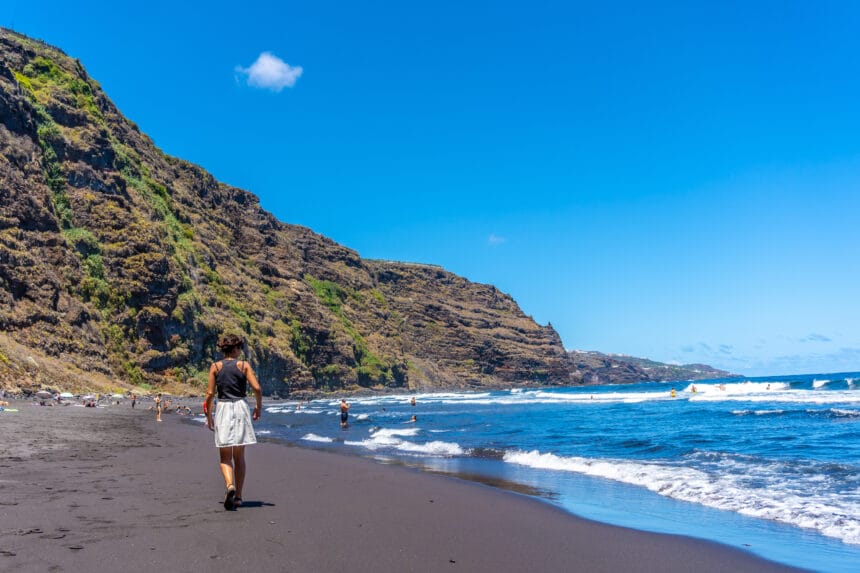When January rolls around and you’re staring at another grey morning through rain-streaked windows, the urge to book a flight somewhere warm becomes almost overwhelming. But here’s the thing – you don’t actually need to endure eight hours cramped in economy or deal with the inevitable jet lag recovery just to feel proper sunshine on your face.
I’ll be honest, I used to think escaping winter meant Thailand or the Caribbean. Perhaps that’s what the travel magazines want us to believe. But after stumbling across some genuinely surprising destinations much closer to home, I’ve realised we’ve been making this whole winter sun thing far more complicated than it needs to be.
The Canary Islands are probably the most obvious choice, and for good reason. Tenerife and Gran Canaria sit just off the African coast, which means they’re blessed with that lovely subtropical climate year-round. Even in December and January, you’re looking at temperatures around 20°C during the day. It’s not exactly beach weather for everyone, but it’s certainly warm enough for outdoor dining and proper walks without three layers of clothing.
What I find particularly appealing about the Canaries is how different each island feels. Lanzarote has this almost otherworldly volcanic landscape that makes you feel like you’ve travelled much further than you actually have. Meanwhile, La Palma is surprisingly green and mountainous. I think there’s something quite satisfying about the variety – you could island-hop and have completely different experiences without ever leaving Spanish territory.
Cyprus is another gem that doesn’t get nearly enough attention during winter months. The southern coast around Limassol and Paphos stays pleasantly mild, often hitting 18-19°C in the depths of winter. Admittedly, you might not be swimming in the sea, but the weather’s perfect for exploring ancient ruins or hiking in the Troodos Mountains. Plus, the food is exceptional – proper Mediterranean cuisine without the summer crowds fighting for tables.
Malta surprised me completely. I’d always thought of it as a summer destination, but winter there is actually rather lovely. The temperatures hover around 16-18°C, which might not sound tropical, but when you’re coming from a British winter, it feels like a proper treat. The island has this fascinating mix of influences – you can see Arabic architecture alongside British colonial buildings, and the locals speak a language that sounds like a blend of Italian and Arabic. It’s genuinely intriguing.
Now, I should mention that none of these places will give you that blazing 30°C heat you’d get in Southeast Asia. But perhaps that’s not entirely a bad thing. There’s something quite pleasant about weather that’s warm enough to sit outside with just a light jumper in the evening, without feeling like you’re melting during the day.
The practical benefits are considerable too. Flight times from the UK are typically between two to four hours – short enough that you don’t lose a day to travel on either end. You’re also staying within European time zones, so there’s no jet lag to contend with. I’ve found this makes even a long weekend feel worthwhile, whereas flying to Asia for anything less than a week feels rather pointless.
Portugal’s Algarve region deserves a mention as well. While it’s not exactly warm by summer standards, winter temperatures often reach 15-17°C with plenty of sunshine. The beaches are empty, restaurant prices drop, and you get a much more authentic feel for local life. I think there’s something quite romantic about having dramatic coastlines almost entirely to yourself.
The Azores are perhaps the most unexpected option. These Portuguese islands in the middle of the Atlantic maintain surprisingly stable temperatures year-round, usually around 17-19°C in winter. The landscape is absolutely stunning – volcanic lakes, hot springs, and incredibly lush vegetation. It feels remote and exotic despite being technically part of Europe.
One thing I’ve noticed about all these destinations is how much more relaxed they feel during winter months. Without the summer crowds, you get a genuine sense of local culture. Restaurant staff have time to chat, attractions aren’t packed, and accommodation prices are often significantly lower. There’s something quite appealing about experiencing these places when they’re not in full tourist mode.
The key, I think, is managing expectations properly. You’re not going to get blazing heat or perfect swimming conditions. But if what you’re really craving is escape from grey skies, some vitamin D, and the simple pleasure of sitting outside without a coat, these European options deliver brilliantly.
Perhaps most importantly, they’re accessible enough that you could realistically do this sort of trip multiple times during winter rather than saving up for one big exotic holiday. Sometimes the best-kept secrets are hiding in plain sight, just a few hours’ flight away.













